41 Orders of Insects: Hymenoptera
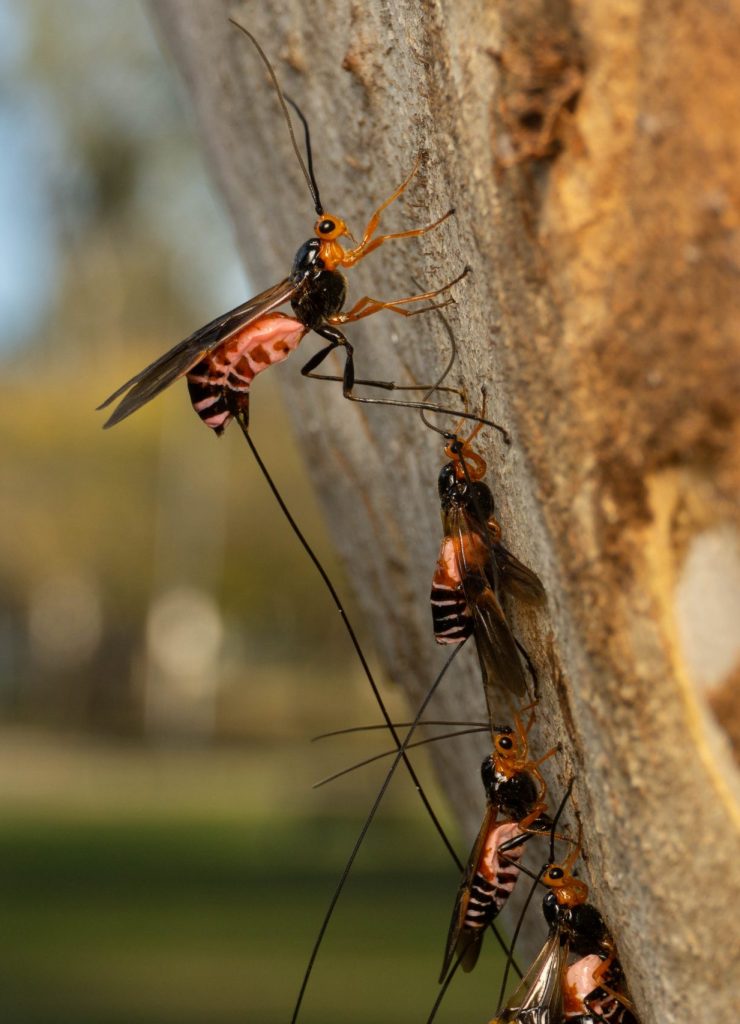
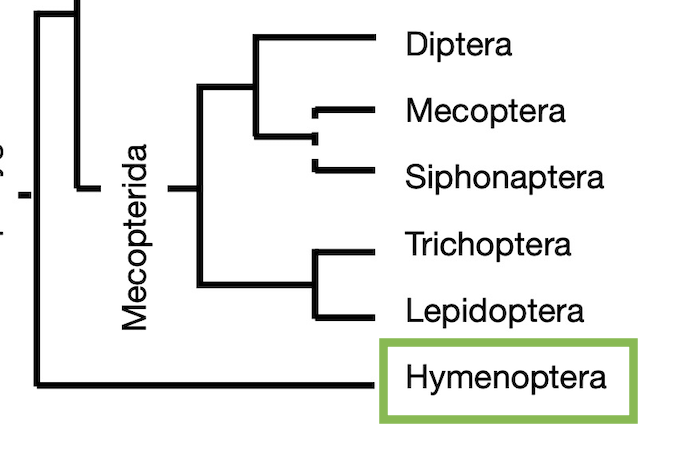
Order Hymenoptera: Wasps, bees, ants and sawflies
Hymenoptera
- common names: bees, wasps, ants, sawflies
- from Greek: hymen = membrane; ptera = wings
- a large and diverse Order; estimated 150,000 species worldwide; over 14,000 species in Australia, about 30% are ants
- behaviour highly evolved and complex; ecological specialists; a very beneficial order of insects
- found in most terrestrial habitats, esp. near flowering plants
- many species are parasitoids; most effective natural enemies in applied biological control
- feed on a wide range of foods:
- phytophagous - e.g. sawflies and some wasps
- parasites of other invertebrates - e.g. parasitic wasps
- predators - e.g. ants, spider wasps, paper wasps
- many wasps & bees feed on nectar as adults
- generalists, e.g. ants
- some are eusocial e.g. ants, bees, some paper wasps
- pollination by honeybees (domestic species) and wild bees value billions of $$ annually
Two suborders:
- Symphyta - abdomen broadly attached to thorax; most called sawflies (females have a saw-like ovipositor)
- Apocrita - abdomen constricted between segments 1 and 2 to form a "waist"; ants, bees and wasps
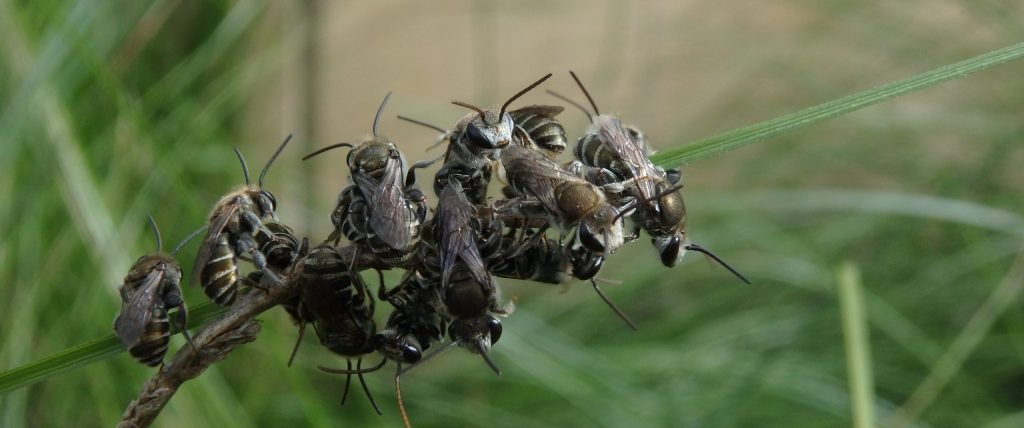
Characteristics of Hymenoptera
Adults
- very small to large
- mandibulate mouthparts; maxillae and labium are modified in bees to form a proboscis for uptake of nectar
- variable: large compound eyes in most, but sometimes reduced or no eyes; ocelli often present; antennae multi-segmented, often long and held forward; 'elbowed' in ants
- most have two pairs of membranous wings with simple venation; forewings larger; fore and hind wings coupled together by hooks on hind wing (hamuli); some wingless, e.g. some female wasps and ants
- thorax either three-segmented OR forms a mesosoma by incorporation of first abdominal segment in which case the abdomen is petiolate (waisted)
- a stinger (ovipositor) present in some at the tip of abdomen
Immatures
- very variable: many lack legs completely; all have distinct mandibles even if head is reduced
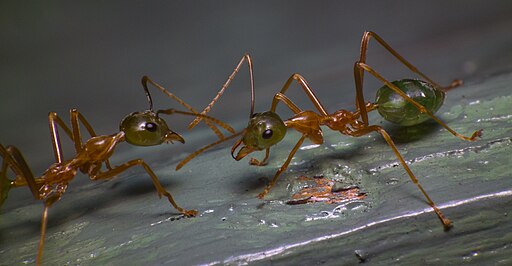
Notes
Sawflies
Family Pergidae are the sawflies whose larvae are commonly found in aggregations on eucalyptus. They are called spitfires because they spit drops of eucalyptus oil when disturbed.
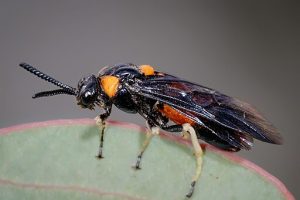
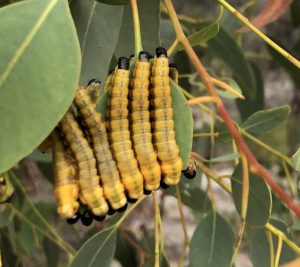
Fairy wasps in the family Mymaridae are some of the tiniest insects--most are egg parasitoids, laying their eggs into the eggs of other insects.
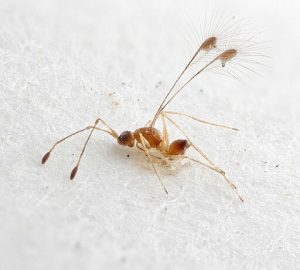
Topic Review
Do you know…?
- the main anatomical features of Hymenoptera
- the economic importance of Hymenoptera

